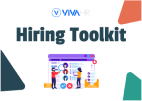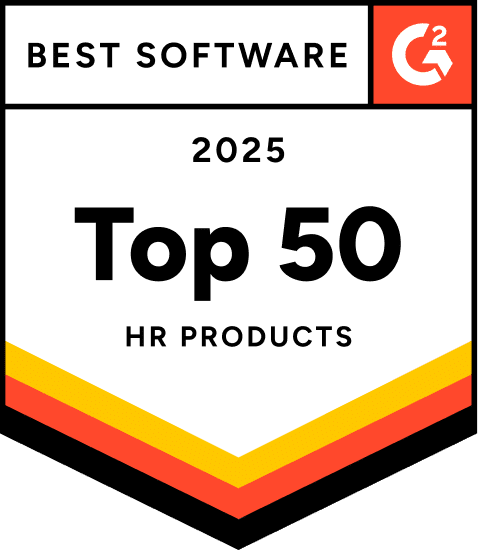Home » Industry News 2 » Businesses Turn to New Platforms for Competitive Edge in Recruitment
Wednesday, September 24th, 2025
Imagine a small tech startup in a midwestern city scrambling to fill key roles amid a sea of resumes. The HR team, just a handful of overworked souls, sifts through hundreds of applications, scheduling interviews that drag on for weeks. But what if a sleek digital platform could cut through the noise, matching candidates with pinpoint accuracy and slashing hiring time in half? This isn’t a far-fetched dream it’s the reality unfolding right now in 2025, as companies big and small pivot to innovative tools that promise to revolutionize how we build teams.
Cloud-based applicant tracking and hiring automation tools are reshaping recruitment for small and mid-sized businesses seeking faster, more efficient, and data-driven hiring decisions. As the job market tightens, with skilled workers in high demand across sectors like tech, healthcare, and retail, these platforms aren’t just conveniences they’re necessities for staying ahead.
The shift feels almost inevitable. Gone are the days when recruitment meant posting ads in newspapers or relying on word-of-mouth networks. Today, digital transformation has seeped into every corner of operations, and hiring is no exception. Small and mid-sized businesses, often strapped for resources, are leading the charge, adopting cloud-based systems that handle everything from job postings to onboarding. It’s a response to a landscape where remote work is the norm, and competition for talent crosses borders. These tools level the playing field, allowing SMBs to punch above their weight against larger corporations with dedicated HR departments.
Emerging Trends in Recruitment Technology
Automation, AI, and Analytics Reshape the Talent Acquisition Landscape. Picture this: an algorithm that scans resumes not just for keywords but for subtle patterns of experience and potential fit. That’s the power of AI-driven screening, one of the hottest trends sweeping the recruitment scene. These systems go beyond basic filters, using machine learning to predict which candidates might thrive in a role, reducing human bias and speeding up the process.
Then there’s the rise of mobile-first platforms. In a world where everyone carries a supercomputer in their pocket, why should hiring be tethered to desktops? Cloud-native tools let recruiters post jobs, review applications, and even conduct virtual interviews on the go. Integration is key here seamless connections with job boards like Indeed or LinkedIn, customer relationship management systems, and broader HR software mean no more siloed data. Everything flows into one dashboard, offering a holistic view of the talent pipeline.
Diversity, equity, and inclusion features are gaining traction too. Platforms now include tools to anonymize resumes, ensuring decisions are based on merit rather than demographics. And let’s not forget analytics: real-time dashboards track metrics like applicant sources, drop-off rates, and hire quality, turning gut feelings into data-backed strategies.
The numbers tell a compelling story. According to recent market analysis, the online recruitment platform sector was valued at USD 51.53 billion in 2024, poised to climb to USD 57.70 billion this year, with a compound annual growth rate of 12.17% driving it toward USD 102.70 billion by 2030. This surge reflects the broader embrace of digital tools amid remote work and talent shortages. Similarly, the global recruitment software market is estimated at US$ 3.30 billion in 2025, expected to double to US$ 6.20 billion by 2032 at a CAGR of 9.4%, fueled by the need to streamline processes and cut costs. AI-powered chatbots for screening and predictive analytics for decisions are standout features propelling this growth, as companies grapple with evolving job requirements and tight labor markets.
These trends aren’t happening in isolation. They’re part of a larger digital shift where efficiency meets intelligence. Businesses are demanding platforms that automate the mundane posting jobs across multiple sites with one click, scheduling interviews via integrated calendars while providing insights that feel almost prophetic. Who knew hiring could be so smart?
Real-World Applications and Success Stories
How SMBs Are Using New Platforms to Compete with Enterprise Hiring. Take a mid-sized tech firm, for instance, buried under a deluge of applications for software engineers. By implementing automated screening, they trimmed their time-to-hire from two months to under a month a 40% reduction that meant snagging top talent before competitors could blink. The platform’s algorithms flagged promising candidates early, allowing recruiters to focus on interviews rather than paperwork.
Or consider a retail chain gearing up for the holiday rush. With bulk scheduling features and SMS alerts for interview coordination, they managed to onboard seasonal staff across multiple locations without chaos. No more no-shows or mismatched calendars; everything synced up effortlessly.
Remote-friendly platforms shine here too. For businesses expanding beyond local talent pools, these tools enable nationwide or even global searches. Video interviewing capabilities, coupled with automated transcription and sentiment analysis, make it feel like candidates are in the room, minus the travel costs. One such company reported handling a hiring spike during rapid growth, all with a lean HR team of three. The metrics? Lower turnover and higher employee satisfaction, thanks to better matches from the start.
These aren’t isolated wins. Across industries, SMBs are discovering that what once required a full recruiting agency can now be managed in-house, affordably. It’s democratizing access to high-quality hires, turning underdogs into contenders.
What Businesses Should Know Before Going All-In on Automation. Of course, no transformation is without hurdles. Upfront costs can sting, especially for cash-strapped startups. Subscriptions might run from a few hundred to thousands per month, depending on features and scale. Then there’s the learning curve training staff to navigate new interfaces takes time, and glitches during rollout can frustrate everyone involved.
Data privacy looms large. With regulations like GDPR in Europe and EEOC guidelines in the U.S. tightening, platforms must ensure compliance. Mishandling candidate information could lead to lawsuits or reputational damage. And while AI promises unbiased hiring, algorithms can inherit biases from their training data, inadvertently excluding diverse applicants if not monitored closely.
Integration woes add another layer. If your existing HR systems are outdated, meshing them with shiny new platforms might require custom coding or third-party help. It’s a reminder that technology, for all its promise, demands careful vetting. Businesses jumping in without due diligence risk more headaches than solutions.
Strategic Advantages and Business Impact
Faster Hiring, Better Candidates, and Measurable ROI. The payoffs, though, can be transformative. Time-to-fill positions drops significantly, meaning open roles don’t drag on productivity. Cost-per-hire plummets too, as automation reduces the need for external recruiters or lengthy ad campaigns.
Candidate experience gets a boost with personalized touches automated yet warm emails, progress updates, and feedback loops that make applicants feel valued. This translates to stronger employer branding and higher retention rates, as new hires arrive feeling engaged from day one.
Scalability is a game-changer. During growth spurts or seasonal demands, platforms handle volume spikes without breaking a sweat. Lean HR teams multiply their output, focusing on strategy rather than admin. The ROI shows in the numbers: quicker revenue from filled roles, lower turnover costs, and a more agile workforce ready for whatever the market throws next.
Expert Insights and Future Outlook
What’s Next for Recruitment Platforms in 2025 and Beyond. Looking ahead, generative AI is set to take center stage, crafting tailored job descriptions and even simulating interview scenarios. The HR tech market will likely see more consolidation, with modular platforms allowing businesses to pick and choose features like building blocks.
Experts advise SMBs to seek out scalable, secure options that play well with existing tools. In a recent report on the Businesses Turn to Smart Hiring Platforms to Gain Competitive Edge in a Tight Talent Market, the emphasis is on platforms that deliver not just automation but predictive power from data-rich insights. Recruitment, after all, is evolving from a reactive chore into a strategic weapon. In this tight talent arena, the businesses that master it won’t just survive they’ll thrive, building teams that drive innovation and growth. It’s a reminder that in the end, people power businesses, and the right tools ensure the best people find their way in.
Frequently Asked Questions
How much does recruitment software cost for small and mid-sized businesses in 2025?
Recruitment software subscriptions typically range from a few hundred to several thousand dollars per month, depending on features and company size. While there are upfront costs and learning curves, businesses often see strong ROI through faster hiring, lower cost-per-hire, and reduced turnover rates. The global recruitment software market is valued at $3.30 billion in 2025, reflecting widespread adoption across SMBs.
Common challenges include upfront subscription costs, staff training requirements, and potential integration issues with existing HR systems. Companies must also ensure compliance with data privacy regulations like GDPR and monitor AI algorithms for bias to maintain diverse hiring practices. Despite these hurdles, businesses that properly vet platforms and plan implementation typically see transformative results in their recruitment efficiency.
What are the main benefits of using cloud-based hiring platforms for small businesses?
Cloud-based hiring platforms offer significant advantages including reducing time-to-hire by up to 40%, cutting recruitment costs by eliminating the need for external recruiters, and providing AI-driven candidate screening that reduces bias. These platforms also enable mobile recruiting, seamless integration with job boards like Indeed and LinkedIn, and real-time analytics to track hiring metrics and improve decision-making.
Disclaimer: The above helpful resources content contains personal opinions and experiences. The information provided is for general knowledge and does not constitute professional advice.
You may also be interested in: Teamtailor vs Workable: Explore Alternative ATS for Your Company
Struggling with slow hiring? Open roles drain time, overwork teams, and stall growth. AvaHR transforms recruitment: post to 100+ job boards in one click, track candidates with live dashboards, and collaborate seamlessly via email or SMS. Trusted by hundreds with a 4.9★ rating. Don’t let delays hold you back your next great hire is waiting! Start your free trial today no credit card needed or get a personalized demo to see AvaHR in action.
Powered by flareAI.co





